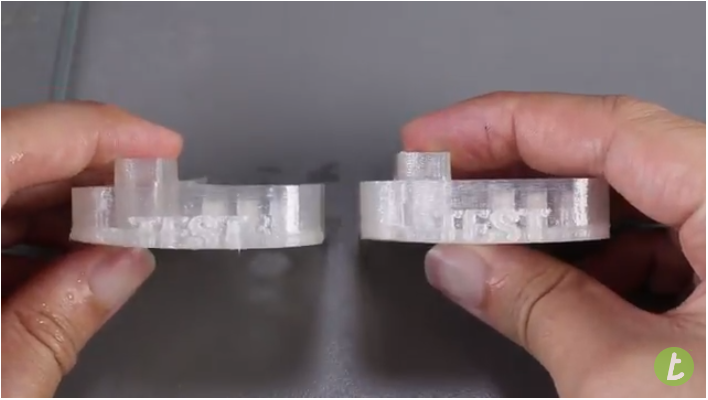Once you’ve bought a 3D printer, there are challenges that lay ahead. One of those challenges is finding a good bed adhesive to make sure that your print’s first layer sticks to the print bed securely yet can be easily removed once the print job is finished. Many people use simple glue sticks, and others use Kapton tape. But there’s always room for a little creativity, as 3D printer company Tinkerine showed in a recent YouTube video.
 Tinkerine, based in British Columbia, is the maker of the Ditto 3D printer line and a champion of 3D printing education, as evidenced by its Tinkerine U educational resources. It’s also a company that is fascinated by 3D printing experimentation, and its YouTube channel is full of its series Tinkerine Experiments, in which the team tries out unconventional methods of post-processing and more. Some of its experiments have included smoothing PLA with a soldering iron, citric acid, or Coca-Cola, or post-processing them with a rock tumbler. In the latest Tinkerine Experiment, the company tried creating a print bed adhesive with sugar water.
Tinkerine, based in British Columbia, is the maker of the Ditto 3D printer line and a champion of 3D printing education, as evidenced by its Tinkerine U educational resources. It’s also a company that is fascinated by 3D printing experimentation, and its YouTube channel is full of its series Tinkerine Experiments, in which the team tries out unconventional methods of post-processing and more. Some of its experiments have included smoothing PLA with a soldering iron, citric acid, or Coca-Cola, or post-processing them with a rock tumbler. In the latest Tinkerine Experiment, the company tried creating a print bed adhesive with sugar water.
No complicated formulations went into creating the sugar water; the video’s host simply dumped some sugar into some water and hoped for the best. He wondered if there may be a bit too much water in the mix, but it didn’t seem to matter in the long run. He spread the sugar water mixture on the print bed and sped the drying process along a bit with a hair dryer, then tried a first test print.
It worked extremely well. The first print stuck easily to the print bed, and was removed easily once the print was finished. The second and third prints showed a bit of lift in one corner; the host theorized that the sugar water may not have spread evenly to that part of the print bed. Other than that corner, however, the second and third prints adhered just as well as the first.
The prints required a bit of cleaning to remove the sticky sugar water residue, but no more than would be necessary with a glue stick or other form of adhesion. Overall, using sugar water was a clever and inexpensive way to get prints to stick to the print bed, an alternative to the usual methods.
The experiment was suggested by YouTube user Aleksander Alekseev, who pointed out that a bigger challenge might be to try printing with ABS using the sugar water solution (the original experiment used PLA). He also suggested using a brush to spread the sugar water more evenly, while the bed was heating so it dried more quickly.
If you have a suggestion for an experiment to try, you can contact Tinkerine by commenting on their YouTube channel or through their website.
Discuss this and other 3D printing topics at 3DPrintBoard.com or share your thoughts below.
Subscribe to Our Email Newsletter
Stay up-to-date on all the latest news from the 3D printing industry and receive information and offers from third party vendors.
You May Also Like
3D Printing Unpeeled: Biofuel Waste to Filament & Sustainable Photopolymers
I can’t ever remember a day with so many potentially high impact news stories have come out. In one story, we all know that there are problems with the safety...
Finnair Hires AM Craft to 3D Print Plastic Parts for Aircraft Interiors
Riga-based AM Craft, a supplier specialized in 3D printing aviation components and certified under EASA Part 21G, announced a significant achievement today. The company will assist in upgrading Finnair’s A320...
3DPOD Episode 198: High Speed Sintering with Neil Hopkinson, VP of AM at Stratasys
Neil Hopkinson, a pioneering 3D printing researcher, played a pivotal role in developing a body of research that is widely utilized today. He also invented High Speed Sintering (HSS), also...
3D Printing Webinar and Event Roundup: May 12, 2024
Webinars and events are picking up in the AM industry this week! ASTM International continues its Professional Certificate Course and Stratasys continues its advanced in-person trainings, while 3D Systems is...


































